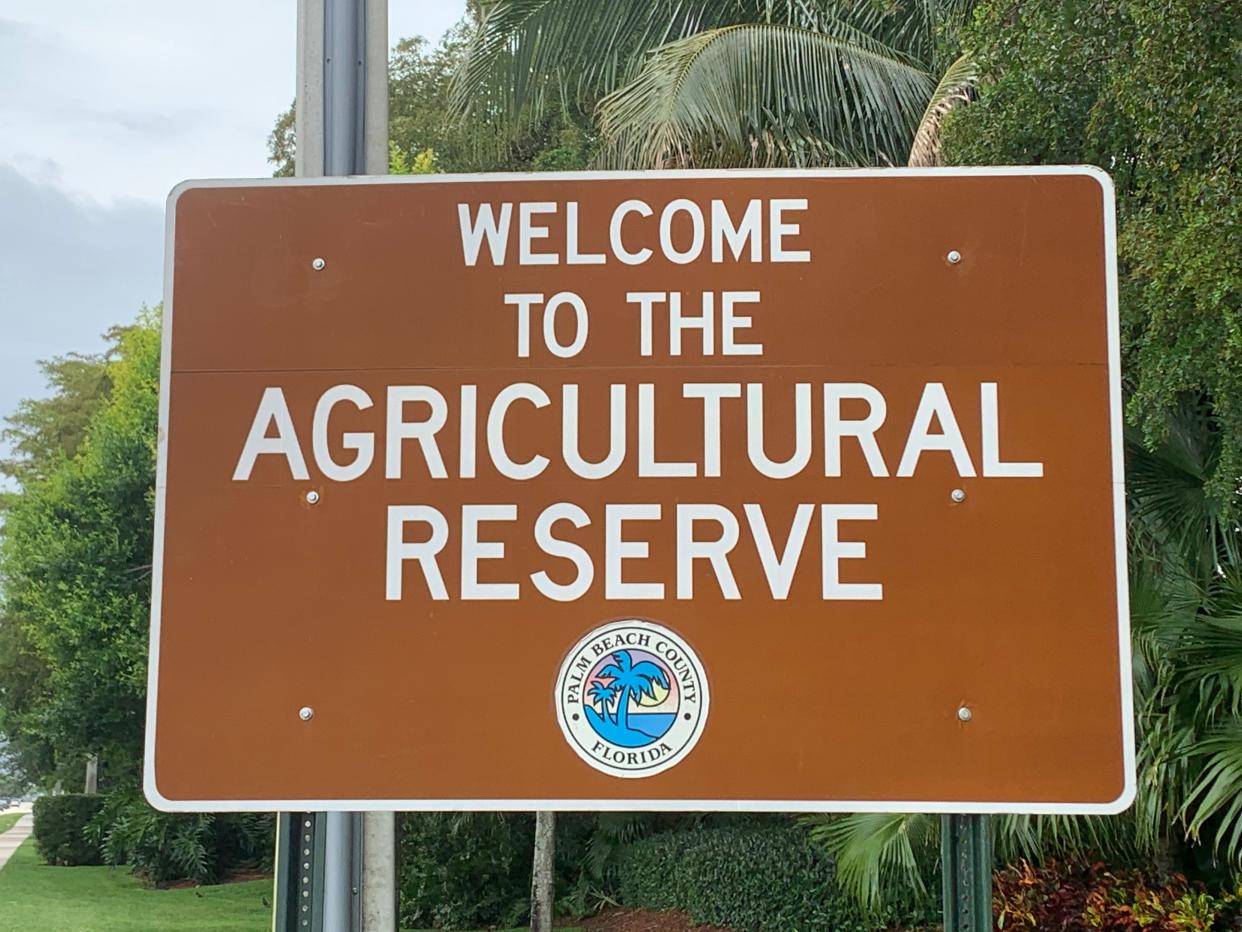Palm Beach County Commission must reject land swap to protect Ag Reserve | Editorial

It was a tough call, but the Palm Beach County Planning Commission got it right when it recently denied a land-swap, proposed by GL Homes, that would have transformed a section of the Agricultural Reserve into houses. The matter will now come before the county commission, which should follow the planning board lead.
The board had justification for its 9-4 recommendation that county commissioners reject GL Homes' long-sought land swap that would allow the development of high-end homes along State Road 7. Approval would set a precedent that the Ag Reserve could not overcome, while many questions remain about the impact further development might have on a part of the county that most taxpayers believe is supposed to be protected.
County planners:No to GL Homes plan for Ag Reserve development
'Stop paving paradise': Farmland vanishing in Palm Beach County as land prices soar
The idea of the Agriculture Reserve is that of a surviving and sustainable area that contains open space for agriculture, environmental resources and water management. That's what county voters had in mind in 1999 when they approved a $150 million bond to conserve parts of the more than 22,000 acres west of Florida's Turnpike.
While the Hyder-West parcel, a mere 683-acre site west of Boca Raton, may seem like small potatoes when compared to the rest of the Ag Reserve, its location proved too problematic to allow GL Homes to build another luxury community.
Unlike other GL Homes projects, this development would take place west of S.R. 7, which is prohibited by county zoning. So, too, is using land from outside of the Ag Reserve to increase the density of developments within the Reserve. However, that didn't slow the developer from attempting to amend the zoning rules.
In exchange for permission to develop the Hyder-West property, GL has offered to give the county 1,600 acres of land farther north, in The Acreage's Indian Trails Grove area, and to significantly reduce the number of almost 4,000 homes it planned to build there. The developer also would build a 30-acre civic site and a 100-acre passive park. Perhaps the best inducement was the 250 "affordable" homes to go with the 1,000 high-end homes slated for the Hyder-West parcel. Give GL credit: In a county becoming more less affordable by the day, additional affordable housing could be seen as a deal-sweetener.
But county planners correctly worried that allowing GL Homes to build west of S.R. 7 would usher in proposals that future planning and county commissioners could not legally prevent. If the goal of the Ag Reserve was to preserve and protect, this new development wasn't it.
All it takes is a drive north along Lyons Road from Clint Moore Road west of Boca Raton, to see how much the Ag Reserve has changed. After passing the "Welcome to the Agriculture Reserve" sign, there is little evidence of agriculture preservation, just waterfall entrances to some of the county's most luxurious residential developments. As it stands now, the Ag Reserve is a shell of a farming region that once produced 80 varieties of vegetables and 12 kinds of fruit. Today, according to 2021 county data, 58% of its 22,069 acres is preserved and only 6,079 acres are saved for agriculture. An almost equal 6,039 acres now is filled mostly with houses.
High-end housing does generate tax revenue, and GL Homes was smart to remind the county that its new project would bring a $500 million increase to the county tax base. Still, that might not be enough to cover the costs the proposed development would generate, in the form of widened roads, schools and other infrastructure needs.
Another new upscale enclave in an area designated for preservation won't help matters. The county commission next month should reject the land-swap and finally, finally re-work the region's comprehensive plan to put an end to this ongoing patchwork of development and preserve at least some of the promise of the Ag Reserve.
This article originally appeared on Palm Beach Post: Editorial: Palm Beach County can preserve Ag Reserve by rejecting land swap deal

